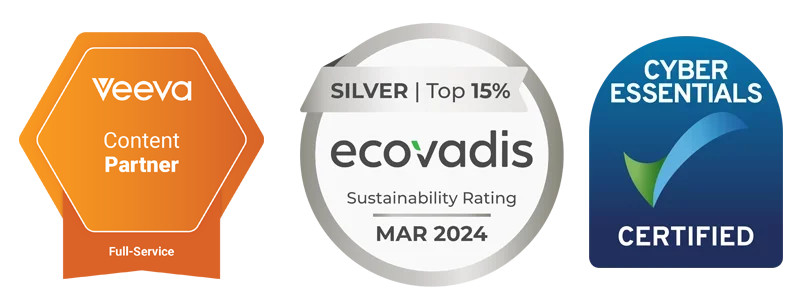
How can you ensure that the market access materials, value proposition and evidence developed by global teams will resonate for your local audience? National market access teams and other local affiliates are regularly required to adapt global value materials to reflect the nuances and requirements of their local healthcare systems.
At Mtech Access, we have a wealth of experience in developing customer communication materials at both global and affiliate level. Leading Pharma and Medtech companies regularly engage our value experts to develop their market access strategy and value communication. Our experts work with global and other cross-market teams to shape their global market access strategy, global value proposition, dossier and materials. We also work with national teams and local affiliates to adapt global content into engaging customer communication tools that resonate with local payers.
In this article, our experts pool their knowledge and experiences to share their recommendations for successfully taking global materials local.
What good looks like for local value communication materials
Without careful planning and preparation, materials produced at a global level, or even at specific market level, can get lost in translation when they are adapted for use in alternative markets.
In order to achieve successful local market access and maximise uptake, local communication materials need to demonstrate the value of the product to key local stakeholders.
To do this, materials should:
- Be engaging and succinctly communicate the value of the product
- Utilise market-specific data, evidence, and policy, wherever possible
- Allow flexibility in content structure and flow through the use of digital platforms
- Resonate directly with the right customer at the right time, speaking to their priorities and areas of focus
In order to achieve this, we highly recommend working with expert communication consultants (like us) and making sure you ask these key questions!
1. Does the financial argument work for my local payers?
When considering the ‘cost’ argument, it is key to remember that any financial benefits that can be demonstrated in one market may not translate into another.
For example, we had a client who first developed communication materials for the UK market. Their product delivered indirect cost savings for UK healthcare systems, as they were able to evidence a reduction in hospitalisations and length of stay, compared with alternative treatments.
Reducing patients’ time in hospital is an important consideration in the UK. The NHS has targets relating to reducing length of stay and bed occupancy levels due to the associated ‘high cost’ tariffs, and other factors. So this message was highly relevant for UK payers.
However, this is not true for other markets, such as Germany. When we adapted the tool for the German market, and inputted local data, the cost savings demonstrated by the budget impact model (BIM) weren’t substantial enough to interest local decision makers. As a result, the ‘cost’ argument fell flat. We advised our client to focus on a different area of product value and use this as the basis of communication with German payers. In the end, our client opted to develop a new communication piece for this market.
Before developing any local communication strategies and tools, we recommend re-evaluating the cost and value arguments and testing these with local decision makers and end-users in the local affiliate team. If adapting a tool for multiple markets, it can even be helpful to scope out the financial argument before starting development. This way, the model and its interactivity can be developed in such a way that enables easy adaptation for different local value stories.
2. Does the clinical evidence meet payer expectations?
Expectations relating to the clinical evidence used in market access materials can vary between markets. Regulatory authorities, healthcare systems and payers can all have different expectations of the clinical evidence.
The acceptance of real-world evidence (RWE) is a good example of this.
Whilst RWE can be used to support reimbursement, randomised control trial (RCT) data are the gold standard for all health technology assessments (HTAs) and reimbursement decisions. However, RWE is sometimes used when head-to-head RCT data are not possible e.g. for rare diseases (although for chronic diseases, RCT data are essential).
Stakeholders in some markets are more willing to accept RWE than others. If, for example, a global economic model has been produced with RWE, it may prove difficult to get the model and outcomes to resonate. Also, RWE may resonate with local regional decision makers and be a key part of the value story, even where the national HTA payer does not accept it.
Similarly, local stakeholders may require clinical evidence to be generated within the predominate ethnicity for that market. For example, Asian markets often require additional studies within a similar population (they are unlikely to accept studies conducted only in Caucasian patients).
It may be that the global market access strategy isn’t suitable in your specific market. Or additional data may be required in order for the strategy to resonate successfully and result in successful uptake.
3. Does my proposition reflect local treatment guidelines?
Specific markets often have different clinical guidelines in place. Local regulators may have approved a variety of therapeutic options at different levels, meaning that different products are being recommended as first- or second-line treatments. Different markets may have approved certain products for various population types. Equally, a competitor product may not yet have been approved.
If a global model has been developed, it may be using different comparators and assumptions that are not relevant in your market. An example could be differences between US, European, and market specific (e.g. NICE or SMC) guidelines.
As an example, we recently worked on a value proposition that was developed using NICE guidelines. NICE designated the client’s product as the first-line treatment. However, under European guidelines, the client’s product was placed as second-line. This impacted how the product was perceived by European payers and, as such, the value proposition needed adapting in order to resonate in these markets. We worked with the client on additional adaptations to the value proposition and re-developed the BIM for these markets.
4. Do the materials align with the current treatment pathway in this market?
As well as differences in treatment guidelines, there can also be variation in the approach of delivering care in different markets. These could include:
- Where the treatment is delivered (inpatient versus outpatient versus at-home)
- Who delivers the treatment (Nurse versus Consultant)
- The steps in the pathway for the specified disease area
These factors have an important influence on the value of a new product entering the market when compared with its competitors. In addition, changes to the status quo of how patients receive care, whilst being beneficial overall, can have wider implications for healthcare systems. Therefore, it is important to ensure that your value narrative is adapted to reflect the standard of care in each individual market.
5. Do the healthcare priorities align between markets?
Alignment with healthcare priorities can be a key aspect for communicating value that resonates with payers and prescribers. Each healthcare system will have its own set of priorities and policies depending on the infrastructure (nationalised healthcare versus insurance-based systems), socio-economic considerations, as well as many other factors.
As such it is not always possible to identify commonalities between the healthcare priorities and policies between all markets. To maximise the potential for a product, its value needs to align with local priorities to be understood at a market level.
The approach to communicating value within customer communication tools needs to be adapted. We recommend engaging with local market experts early in the development process to ensure the value communication strategy resonates with the needs of the healthcare system.
6. Will my proposition meet the internal approvals process requirements (and deadlines)?
It’s also important to remember that colleagues in local markets will have individual approval processes. Although a material may have been approved at a global or regional level, it doesn’t necessarily mean it will be approved for use at a local level. There are a lot of factors that come into play, including data considerations, differences in medical review teams, local policy, and guidelines, for example.
To mitigate this challenge, we recommend involving the formal review team from the start of the project. This way they can advise on any perceived challenges with the already developed materials and provide guidance at an early stage. This will ensure any hurdles are flagged at the start and can be discussed and actioned accordingly.
Adapting/developing your customer communication materials
If you’re looking for strategic or tactical support to get your customer communication materials developed, or adapted for different markets, email info@mtechaccess.co.uk today.


